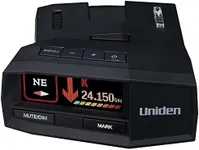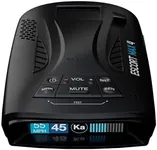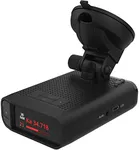Buying Guide for the Best Radar Detectors
Choosing the right radar detector can make your driving experience safer and more relaxed by alerting you to speed traps and traffic enforcement devices. The key to picking the best radar detector for you is understanding your driving habits, the areas where you drive most often, and the features that will be most useful for your needs. By learning about the main specifications, you can make a more informed decision and avoid paying for features you don't need or missing out on important ones.Detection RangeDetection range refers to how far away the radar detector can pick up signals from police radar guns or speed cameras. This is important because a longer range gives you more time to react and adjust your speed. Detection ranges can be short, medium, or long. Short-range detectors might only give you a few seconds' warning, which is usually enough in city driving but not on highways. Medium-range detectors offer a balance and are suitable for mixed driving. Long-range detectors are best for highway driving where you need more time to respond. If you mostly drive in the city, a medium or short range may be enough, but for frequent highway travel, look for a detector with a long detection range.
False Alert FilteringFalse alert filtering is the detector's ability to ignore signals from non-police sources, like automatic doors or other vehicles' safety systems. This is important because too many false alerts can make you ignore real warnings. Some detectors have basic filtering, which may still let through many false alerts, while advanced models use GPS and smart algorithms to reduce them. If you drive in urban areas with lots of electronic signals, look for a detector with strong false alert filtering. For rural or highway driving, basic filtering may be enough.
Band Detection (X, K, Ka, Laser)Radar detectors can pick up different types of radar bands: X, K, Ka, and sometimes laser (LIDAR). Each band is used by different types of speed enforcement equipment. It's important because missing a band could mean missing a speed trap. Some detectors only cover the most common bands, while others cover all. If you drive in areas where police use a variety of radar and laser devices, choose a detector that covers all bands. If you know your local enforcement only uses certain bands, you can focus on those.
GPS FeaturesGPS features in radar detectors allow the device to remember locations of frequent false alerts and mark known speed camera or red-light camera locations. This is important for reducing unnecessary alerts and increasing your awareness of fixed enforcement points. Some detectors have no GPS, some have basic GPS for marking locations, and others have advanced GPS with automatic updates. If you drive the same routes often or want to be warned about fixed cameras, GPS features are very helpful. If you only need basic radar detection, you may not need GPS.
Display and AlertsThe display and alert system refers to how the detector communicates warnings to you, such as through lights, sounds, or voice alerts. This is important for making sure you notice alerts without being distracted. Some detectors have simple lights and beeps, while others offer detailed displays and voice alerts. If you prefer clear, easy-to-understand warnings, look for a detector with a good display and voice alerts. If you want something less noticeable, a basic alert system may be enough.
Stealth and Immunity to Radar Detector Detectors (RDDs)Some areas use devices called Radar Detector Detectors (RDDs) to find drivers using radar detectors, which may be illegal in certain places. Stealth features help your detector avoid being detected by RDDs. This is important if you drive in areas where radar detectors are banned. Some detectors have no stealth, some have partial immunity, and others are fully undetectable. If you drive where detectors are illegal, choose a model with strong stealth features. If not, this may not be a concern for you.










